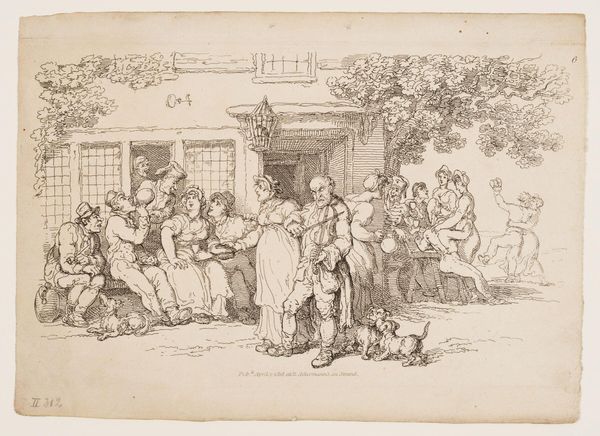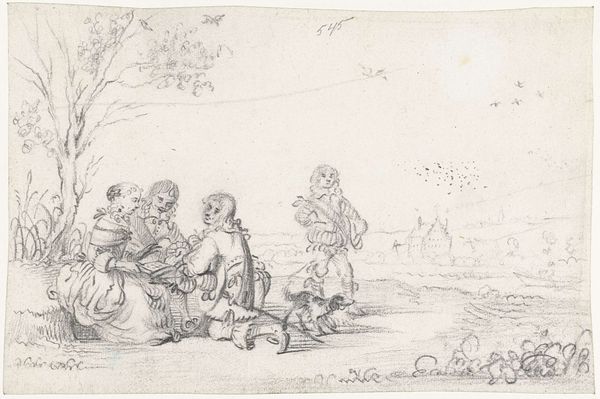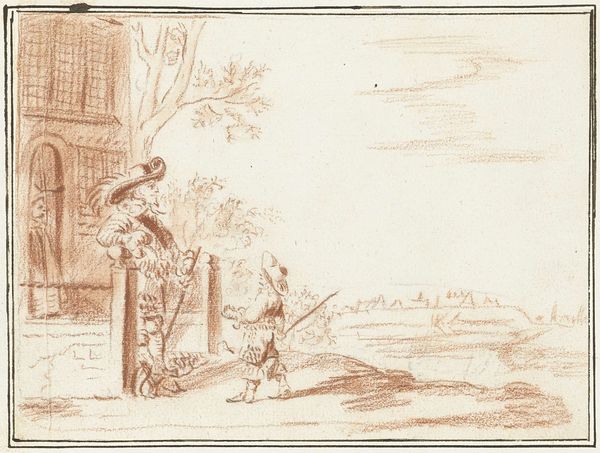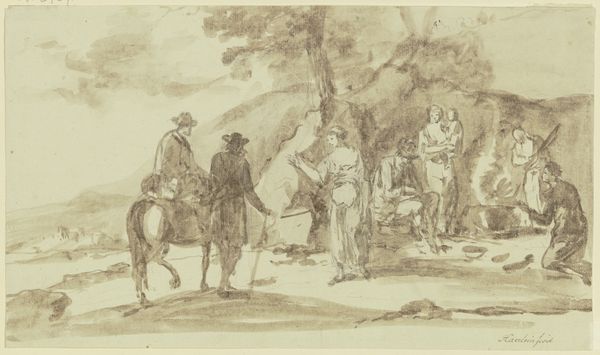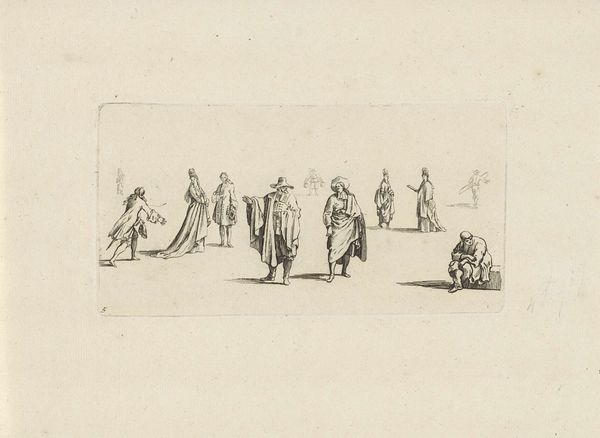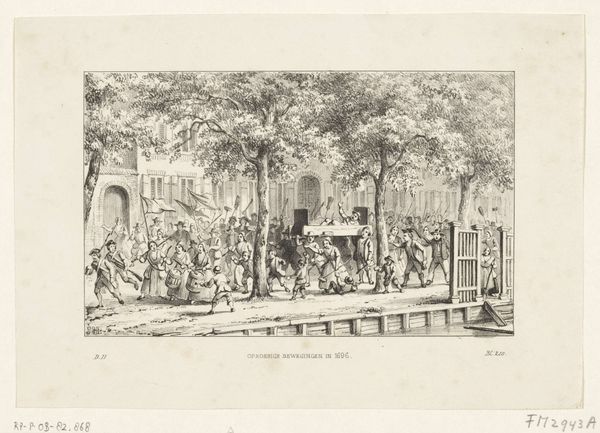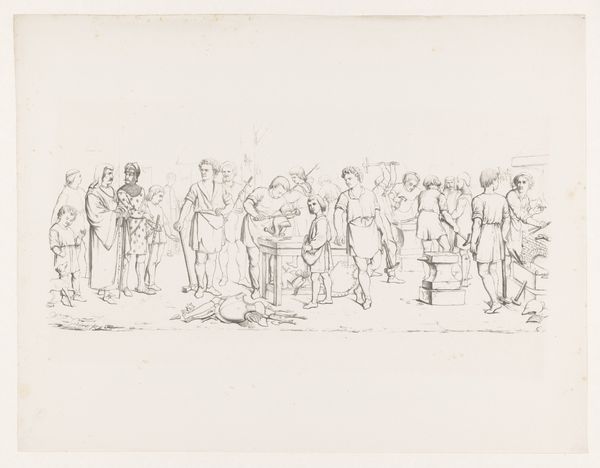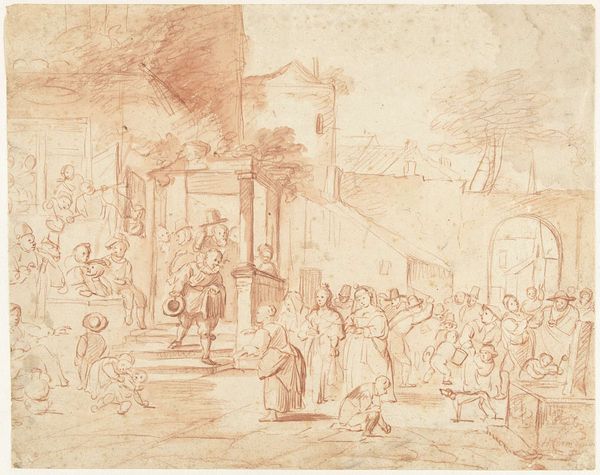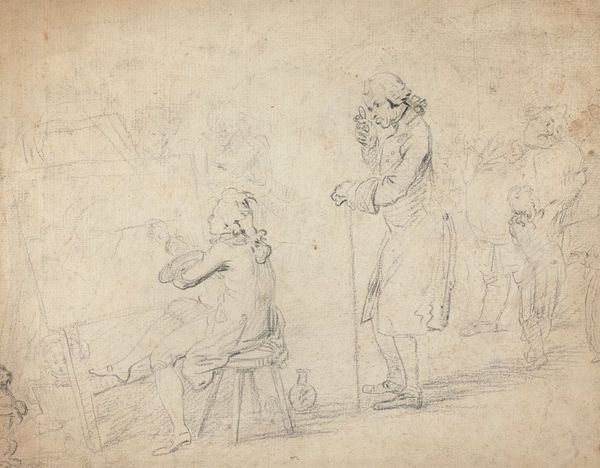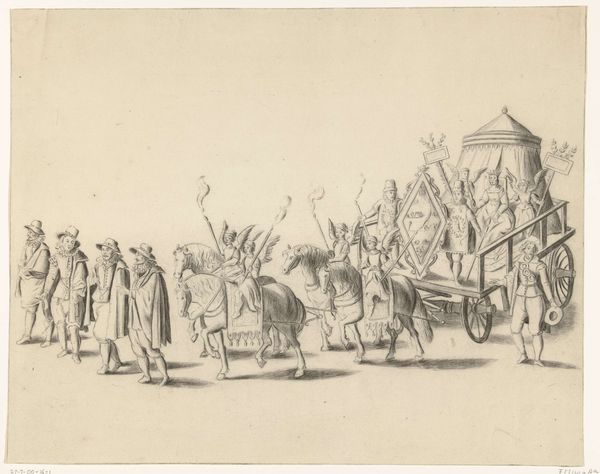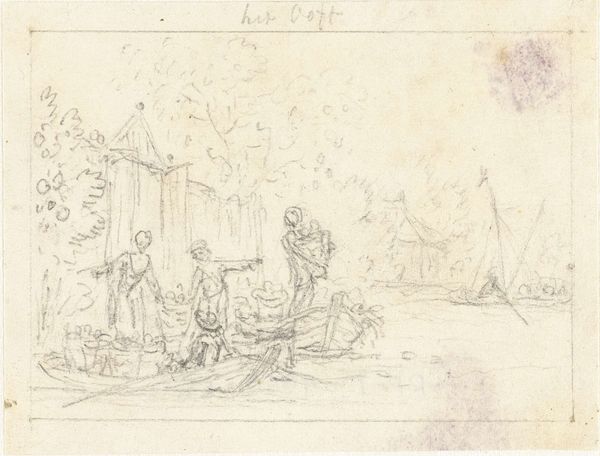
drawing, paper, pencil
#
drawing
#
narrative-art
#
dutch-golden-age
#
landscape
#
figuration
#
paper
#
pencil
#
line
#
genre-painting
Dimensions: height 213 mm, width 327 mm
Copyright: Rijks Museum: Open Domain
Curator: The first thing that strikes me about this pencil drawing, "Stel begroet een dame bij de deur van een landhuis," is its almost dreamlike quality. The lines are so delicate, as if the whole scene might vanish in a puff of smoke. It dates back to around 1659, a glimpse into the world as seen through the eyes of Gesina ter Borch. Editor: I see it, and I think that fragility actually says so much about the lives of women within the domestic sphere during the Dutch Golden Age. Ter Borch captures a very specific power dynamic here, doesn’t she? Curator: You think so? Tell me more. It feels almost like a polite encounter, nothing more. The title suggests a simple greeting between a man, "Stel," and a lady. Editor: But look closer. "Stel" may be greeting her, but he’s arriving with a retinue. He has wealth and status visibly displayed by his attendants; the lady is standing alone in the doorway, passively waiting. It’s a controlled entry, and who is being controlled here? Curator: Ah, I see what you mean. It's interesting how the seemingly innocuous details, like the dog at her feet, suddenly carry a heavier weight. Almost a symbol of enforced loyalty or domesticity? Ter Borch manages to imply so much with so little. The paper itself seems to breathe, doesn't it? Editor: Precisely! And think about ter Borch's position as a woman artist in that period. Subtlety became a vital tool for critique. I wonder how conscious she was of coding these visuals as commentary. This drawing, seemingly a simple genre scene, becomes this potent study of power and gender roles. It subtly dismantles notions of idealized domesticity. Curator: Perhaps her own position influenced that keen observation, existing both within and outside those societal norms. I almost feel as though I’ve interrupted something private just by looking at it, catching this snippet of someone else's history. It’s the intimacy of pencil on paper; it lends itself to quiet, thoughtful observations. Editor: Exactly. This isn't just a depiction of a social encounter. It’s a document of the nuanced ways women navigated, negotiated, and perhaps even subverted the power structures of their time. It compels us to look deeper, beyond the surface pleasantries, into the complex realities of gender, class, and social expectation. Curator: Well, I must admit you’ve opened my eyes to a deeper reading than I initially perceived. Thanks for prompting that deeper consideration of societal nuance and gender dynamics present, hidden within a sketch. Editor: Always! It is those historical and social undercurrents in art, so often overlooked, that reveal so much more about the artist and their world.
Comments
No comments
Be the first to comment and join the conversation on the ultimate creative platform.
